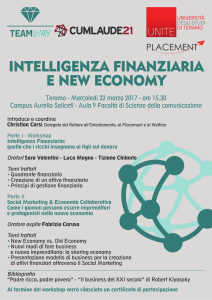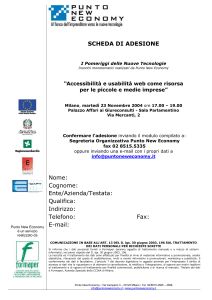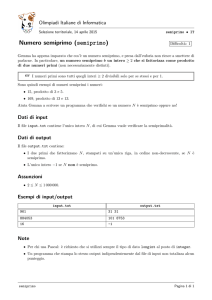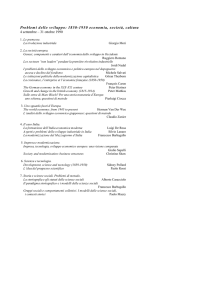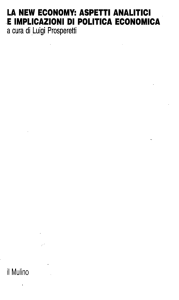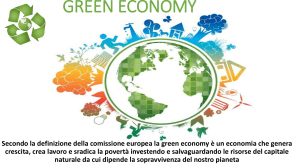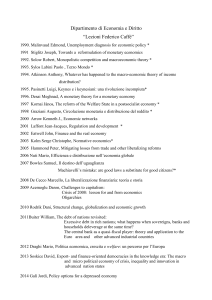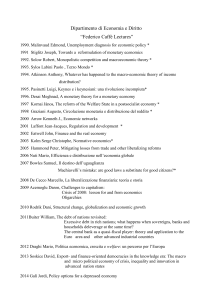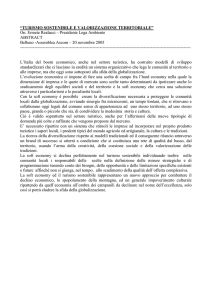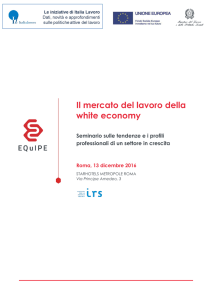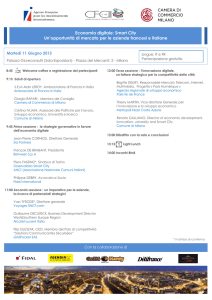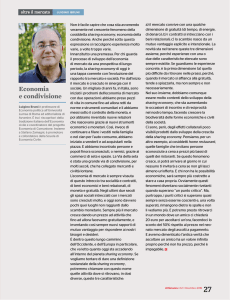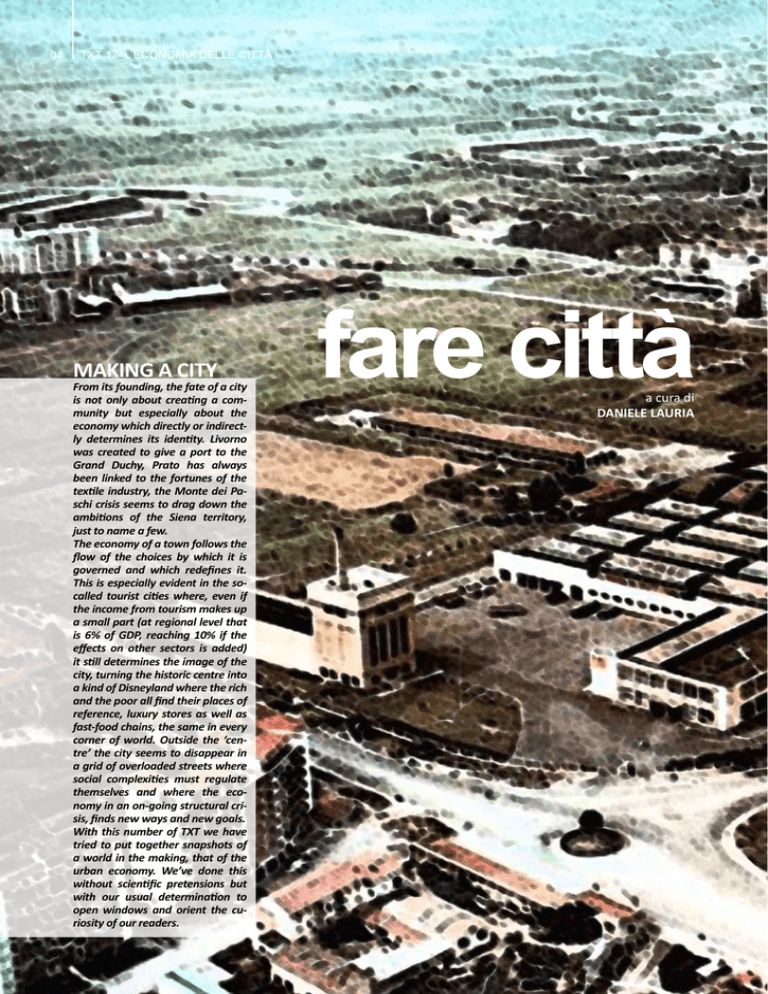
04
TXT 17_L’ECONOMIA DELLE CITTÀ
MAKING A CITY
From its founding, the fate of a city
is not only about creating a community but especially about the
economy which directly or indirectly determines its identity. Livorno
was created to give a port to the
Grand Duchy, Prato has always
been linked to the fortunes of the
textile industry, the Monte dei Paschi crisis seems to drag down the
ambitions of the Siena territory,
just to name a few.
The economy of a town follows the
flow of the choices by which it is
governed and which redefines it.
This is especially evident in the socalled tourist cities where, even if
the income from tourism makes up
a small part (at regional level that
is 6% of GDP, reaching 10% if the
effects on other sectors is added)
it still determines the image of the
city, turning the historic centre into
a kind of Disneyland where the rich
and the poor all find their places of
reference, luxury stores as well as
fast-food chains, the same in every
corner of world. Outside the ‘centre’ the city seems to disappear in
a grid of overloaded streets where
social complexities must regulate
themselves and where the economy in an on-going structural crisis, finds new ways and new goals.
With this number of TXT we have
tried to put together snapshots of
a world in the making, that of the
urban economy. We’ve done this
without scientific pretensions but
with our usual determination to
open windows and orient the curiosity of our readers.
fare città
a cura di
DANIELE LAURIA
05
IL DESTINO DELLE CITTÀ, FIN DALLA LORO FONDAZIONE, NON È SOLO LEGATO AL FARE COMUNITÀ
MA SOPRATTUTTO ALL’ECONOMIA CHE DIRETTAMENTE O INDIRETTAMENTE NE DETERMINA L’IDENTITÀ. LIVORNO NASCE PER DARE UN PORTO AL GRANDUCATO, PRATO LEGA DA SEMPRE LE SUE SORTI
A QUELLE DELL’INDUSTRIA TESSILE, LA CRISI DEL MONTE DEI PASCHI SEMBRA TRASCINARE AL RIBASSO LE AMBIZIONI DEL TERRITORIO SENESE, SOLO PER FARE QUALCHE ESEMPIO.
CERTO L’ECONOMIA DELLE CITTÀ SEGUE IL FLUSSO DELLE SCELTE CON CUI SI GOVERNANO E CHE NE
RIDEFINISCONO IL “GENIUS LOCI”. CIÒ È EVIDENTE NELLE CITTÀ COSÌ DETTE TURISTICHE DOVE, ANCHE SE L’ECONOMIA DEL TURISMO È UNA PARTE MINORITARIA (A LIVELLO REGIONALE VALE IL 6%
DEL PIL, UN DATO CHE ARRIVA AL 10% AGGIUNGENDO LE RICADUTE SU ALTRI SETTORI) ORIENTA,
PER COME VIENE GESTITA, L’IMMAGINE STESSA DELLE CITTÀ E NE TRASFORMA IL CENTRO STORICO
IN UNA SORTA DI DISNEYLAND IN CUI IL RICCO E IL POVERO TROVANO I LORO LUOGHI DI RIFERIMENTO, IL NEGOZIO DI LUSSO COME IL FAST FOOD, UGUALI IN OGNI ANGOLO DEL MONDO. FUORI DAL
‘CENTRO’ LA CITTÀ PARE SCOMPARIRE NEL RETICOLO DELLE STRADE AMMALATE DI TRAFFICO, DOVE
LE COMPLESSITÀ SOCIALI DEVONO AUTOREGOLAMENTARSI E DOVE L’ECONOMIA TROVA, NEL PERDURARE DI UNA CRISI STRUTTURALE, NUOVE FORME E NUOVI OBIETTIVI.
CON QUESTO NUMERO DI TXT PROVIAMO A METTERE INSIEME ISTANTANEE DI UN MONDO, QUELLO
DELL’ECONOMIA URBANA, IN DIVENIRE. LO FACCIAMO SENZA PRETESE DI CARATTERE SCIENTIFICO MA
CON LA CONSUETA VOLONTÀ DI APRIRE FINESTRE E ORIENTARE LA CURIOSITÀ DEI NOSTRI LETTORI.
l’area di Novoli a metà del secolo
scorso con la fabbrica FIAT adesso
sostituita dal ‘quartiere’ di San Donato

